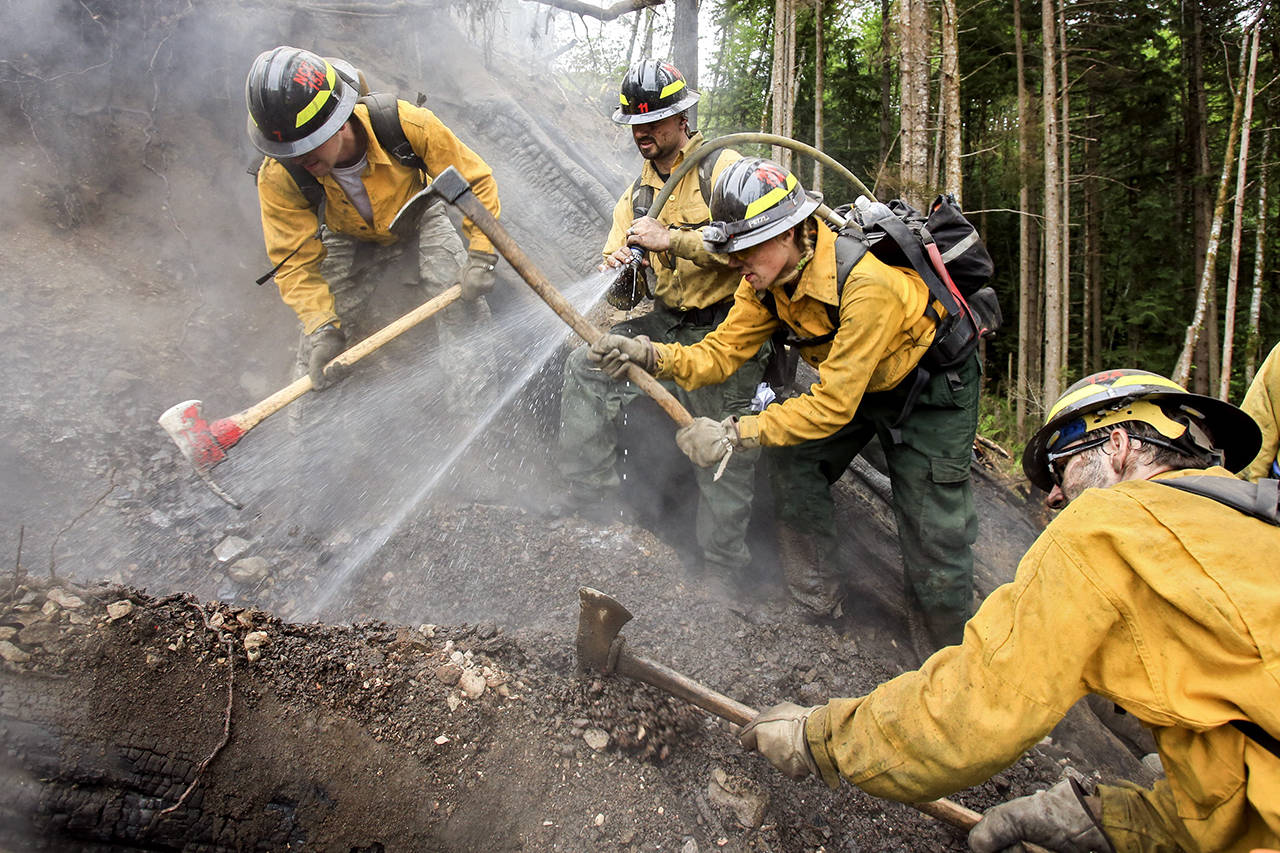TULALIP — For decades, the majority of wildfires burned in the eastern part of the state, which in recent years often blew smokey air west where it lingered for days.
As summers become hotter and dryer, county and state officials warn smog won’t be the only issue people living on the wetter side of the Cascade Range will have to manage. The risk of fires is increasing in the western part of the state.
“These big fires aren’t abnormal for the west side. It’s just we don’t see them near as often, but at some point we will. And we’re are going to need to be prepared for that,” said Chuck Turley, wildfire division manager for the state Department of Natural Resources.
He was addressing a crowd that had assembled at the Tulalip Resort Casino last week for the Managing Western Washington Wildfire Risk in a Changing Climate workshop. The gathering was hosted by the Puget Sound Climate Preparedness Collaborative, the University of Washington Climate Impacts Group, the Northwest Climate Adaptation Science Center and the Tulalip Tribes.
“People on the westside don’t think the westside will burn,” Turley said. “It’s going to at some point is a message we need to do a lot better about.”
Crystal Raymond, an adaptation specialist with the University of Washington Climate Impacts Group, told the gathering Western Washington has seen a 10-fold increase in the acreage burned since the late 1970s. And in coming years, days with high fire risk are predicted to increase.
She said humans are contributing to this change.
Research shows wildfire risk is high for people living in the “wildland-urban interface” — where human development intermingles with undeveloped land.
Today, more than 15 percent of Snohomish County residents live in this zone, according to Jason Biermann, Snohomish County’s emergency management director. Another $10 billion in infrastructure is located in this region.
With wildfires becoming more of an emerging threat, Biermann wants to start planning for fires in the ways agencies and residents get ready for earthquakes, such as creating evacuation plans.
“Here in this county, we are very good with floods … and we’ve had our experience with tragic landslides,” Biermann said. “But those things don’t move at the speed of wildfires.”
Along with more and larger wildfires, fire behavior is also changing, which DNR’s Turley attributed to people building homes in places they didn’t use to live.
“The fires are now burning through areas that we used to be able to use as management tools,” he said.
He warns that resources have become stretched as demand has grown on both sides of the state.
Biermann said there are actions residents themselves can take to make their properties more fire resistant, such as removing surrounding vegetation to clear a defensible space around homes.
The county’s Firewise program, available online, offers more tips and steps for homeowners, he said.
“This is something that is real and something we need to talk about. And something we need folks to be prepared for,” Biermann said.
Lizz Giordano: 425-374-4165; egiordano@heraldnet.com; Twitter: @lizzgior.
Talk to us
> Give us your news tips.
> Send us a letter to the editor.
> More Herald contact information.

























